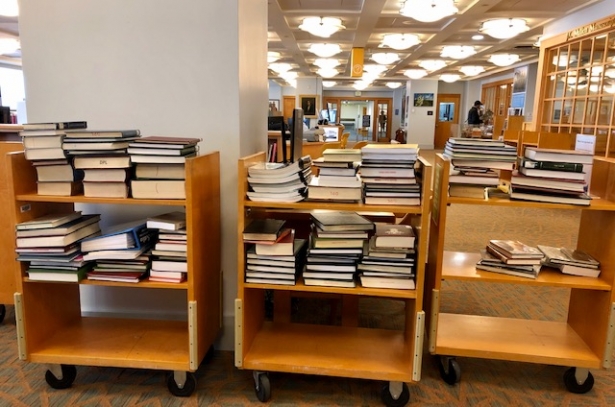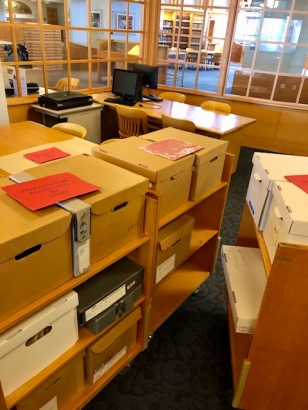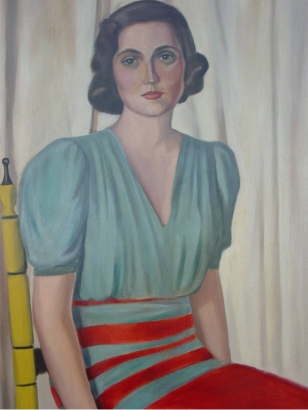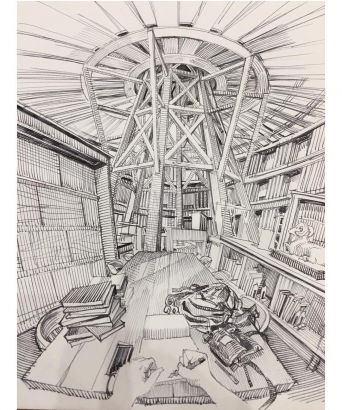(During Denver Public Library's unprecedented, indefinite closure due to COVID-19, WHG librarians, archivists, catalogers, and shelvers are faced with a monumental task: maintain library operations without the actual library. We're up to the task and wanted to share our work stories with our WHG customers in an ongoing series of blogs.
The fourth installment comes from Library Assistant I Laura Hermanstorfer, who describes how she and her colleague keep the department flowing, even without any materials to shelve!)
The surprising (and fortunate) answer to the title question is, “YES!” I am sure I have you wondering what kind of work could be done without physical materials to pull, shelve, or shift. As you likely suspect, working from home after our COVID-19 closure is quite different than our typical days in the department. The Western History and Genealogy (WHG) department houses collections on multiple floors; when we are in the building and things are as they should be, we are constantly moving from floor to floor and definitely getting in our daily steps. Now we are working on our computers at home, reminding ourselves how important it is to get moving.
WHG materials do not circulate out of the department and a great number have the added security of being tucked away in our closed stacks. Accessing these items is one of our core responsibilities. When librarians place a materials request, we locate, sign out, transport, and deliver them expeditiously to the Mullen manuscript room. This can include everything from architectural drawings, manuscript boxes, photo collections, and maps to all those marvelous and rare items from our treasure trove called simply "the vault." Usually, these are not requested all at the same time, of course, but if they were, we would certainly have it covered.
When we are not busy pulling, transporting, delivering, gathering, circulating, organizing, shelving, or shifting materials, we support the department in unexpected ways. We help correct cataloging issues, preserve maps by encapsulating them in the Preservation Lab, and manage special projects like inventorying our master microfilm reels or creating and updating newspaper clippings files. We also serve on WHG department committees, including the Caroline Bancroft History Prize committee.
Many of our core duties do not transfer to remote work (the encapsulation machine did not pack up as nicely as I had hoped). Yet, there is pre-COVID-19 work we can continue in our new work-from-home realities. We collaborate in conducting research and developing strategies to achieve the objectives set forth by the different committees we serve. Some objectives include assessing our essential services and spaces for future improvements; reviewing the art collection’s conservation needs and writing policies for loaning artwork to other city institutions; and creating and coordinating upcoming exhibits. We also continue to attend meetings (albeit virtually now) and write blogs to entertain and inform.
Our department is so diverse and we are so well-integrated that there are always projects that benefit from our contributions. One new task we’re working on is a manuscript data migration project. We transfer finding aids (descriptions of collections’ materials) into neatly organized spreadsheets. Our archivists take that data and migrate into a search tool. Archivist Laura described the archives side of this project in the second installment of our Work From Home series. Additionally, we are aiding with the update of a national map collection database, “Online Guide to U.S. Map Collections”. This project involves verifying and updating institutions' contact information; replacing bad URLs; and giving short summaries on each of the institutions’ collections.
The view from where we now sit looks quite different from the view of the floors we normally zip between when we are maneuvering carts of materials; greeting fellow co-workers from other departments; having quick elevator chats with old friends; or engaging with our volunteers and customers. Rest assured, though, our fingers are now as busy as our feet ever were (and will be once more). Until we meet again on Floor 5 of the Central Library, take good care!





Comments
Love the imagery of busy
Love the imagery of busy fingers as opposed to busy feet! Thanks for the interesting post.
Thanks for reading, Laura! As
Thanks for reading, Laura! As far as fingers and feet go, you get the same mileage out of either set, seeing as there are the same number of phalanges busy at work!
Add new comment